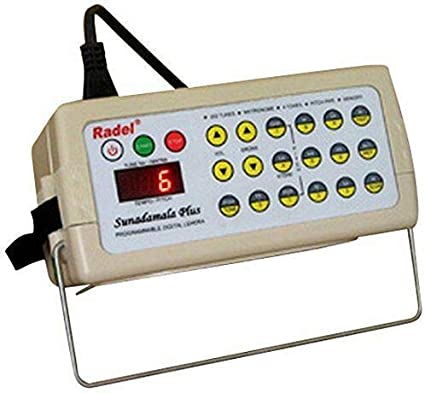Lahrā – लहरा
Quick Definition: a repetitive melody used to keep time in tabla solo. Also used in kathak dance.
Literal Meaning: trill; lively tune
Lahra is also known as nagmā (नगमा), meaning “song” or “melodius voice”.
Lahra Examples
Example 1: Electronic Lahra in Tintal (medium tempo)
Example 2: Live Lahra for Tabla Solo in Tintal (slow tempo) – Swapan Chaudhuri on Tabla with Ramesh Mishra on Sarangi
The clip below includes a short introduction on sarangi before the lahra begins at around 00:22
About Lahra
A lahra is a fixed melody, based on a particular raga, and composed in a particular tal. The lahra outlines, or shows the tal, usually by clearly following the vibhags (divisions).
In performance, we hear lahra in tabla solo, commonly performed by a sārangī player, or by a harmonium player. Other instruments are sometimes used but these two are the most common.
The role of these accompanists is similar to what tabla players do in accompaniment: keep time for the tabla player. This means both keeping the rhythm and showing the tal.
For listeners, lahra melodies can help you follow the tal when listening to a tabla solo, or to some of the demonstrations on this website. Lahra can also help you get a feel for a particular tal’s structure.
On the main pages for tintal, rupak tal, jhaptal, ektal, and arachartal, you will find a lahra example-video.
Lahra in Practice
These days, most tabla players regularly use lahra melodies in their practice. Before smartphones, players used a lahra machine like the one below:

Radel Lahra Machine
These machines produce an electronically generated lahra (a terrible sounding one) in a variety of tals and ragas, with adjustable pitch and tempo.
Today, most players use a lahra smartphone-app. Most of these have more or less the same functionality as the machine versions (and only slightly better sound):

iLehra App on iOS
For some of the demonstrations on DigiTabla, I use a computer-based, MIDI-generated lahra which uses a sampled Santoor such as in the video example above.
While none of these electronic lahra sound as nice as a live musician, they are highly recommended for student practice.
Learning to Follow Lahra
For new students and listeners, an electronic lahra will be easier to follow than a live lahra. Once you learn to follow a few different electronic lahra, you should be able to pick up a live version easier.
I recommend starting with tintal. After you are familiar with the 4–4–4–4 structure of tintal and tintal timekeeping, listen to the lahra example in the tintal section and notice how the melody clearly follows the structure of the tal. Most lahra in tintal will have the same basic form, regardless of the raga they are based on.
Below are links to lahra examples in the 5 classical tals covered on DigiTabla:
Live Lahra Examples
YouTube has many live tabla solos with lahra, though of varying audio quality. Below are a few links to well-recorded tabla and lahra on sarangi or harmonium.
In a full-length tabla solo, the accompanist will often perform an introduction to the raga before starting the lahra. All of the examples below include introductions.
Also, as the solo goes on, the accompanist will add variations and embellishments of all kinds, depending on what the tabla players plays. But in the beginning of the solo, the lahra is more or less fixed.
Kumar Bose – Tabla Solo in Tintal With Ramesh Mishra on Sarangi
Following Kumar’s introduction to the great Ramesh Mishra, the sarangi begins around 1:30. The lahra then begins around 2:50. This is performed in vilambit tintal (slow tempo), around 40 BPM.
This video includes only part of the full solo. The full solo (audio only) is here: part 1 and part 2.
Swapan Chaudhuri – Tabla Solo in Tintal With Murad Ali Khan on Sarangi
Includes a short, beautiful introduction on sarangi. Lahra begins around 1:33. This solo also starts in vilambit tintal (slow tempo), around 43 BPM.
Aneesh Pradhan – Tabla Solo in Tintal With Sudhir Naik on Harmonium
After an introduction on harmonium, the lahra begins around 3:20 in vilambit tintal, around 48 BPM. After the solo in tintal, there is short solo in kaharawa tal starting around 39:10. The lahra begins around 40:15. Aneesh first plays theka variations, then laggi beginning around 42:20.